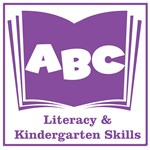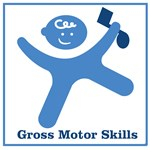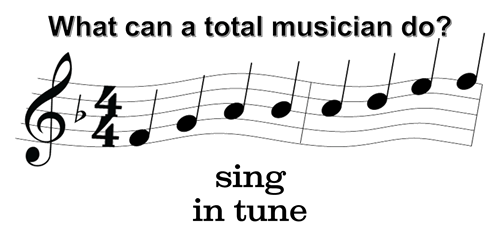|
Here you can find all the information for the classes each week!
|
Green Turtle Shells #5
Wednesday, April 30, 2025 | Green Turtle Shells Lessons
|
Lesson #5
Thank you for coming to class this week and having fun with your child. They love having you there to cheer them on!
Just a reminder, if you are paying monthly, tuition ($75) is due this week. You can scan the QR code on the right with your banking app or use my phone number to pay via Zelle. You can still pay me with Venmo, I just have to pay transaction fees that way.
The kiddos are quickly learning the keyboard basics and moving right along quite nicely. You may be yearning to hear your little one playing beautiful pieces, but remember, this is not just a piano course. We are learning harmony, ear training, singing, and classical music. In time, it will all come together in a more complete and satisfying way than just playing a piece. Enjoy this journey with your child!
I have noticed that the red stickers on the back of the books are still on some of your children's books, which means they aren't on your keyboards at home! Please be sure you use the stickers (which are just electrical tape and should be easy to clean off when the time comes to remove them!) to help your child feel confident with the red chord. We'll be adding another chord soon and they should be confident in playing the red chord before then. Please let me know if you have any questions about placement.
Celebrate Connection
DO is Home
Kit Kat Keyboard:
Sol Fa Mi Re Do
We are training the ear to hear layers of sound with the aquatic canon, Solfege Seafriends. By studying each individual part, we will be able to hear them distinctly even when they are played together. This is a great skill that even most adults don't have! (Page 73 in the reference section of your homework booklet shows which sea animal goes with which musical part.)
Check out this fun example of a canon.
Please text to let me know your child's favorite Green Turtle Shells song so far! That way I know you've read this newsletter! |
Green Turtle Shells #4
Wednesday, April 30, 2025 | Green Turtle Shells Lessons
|
Lesson #4
Next week parents attend and tuition is due for those of you paying monthly! You can scan the QR code to the right in your banking app to pay via Zelle (or just use my phone number).
When you come next week, you can make class especially great by arriving a few minutes early to get your child settled at the keyboard, and throughout class encourage your child, praise them for the wonderful progress their little hands have made (hugs, DO bonks, high 5's, etc.), participate in all of the activities, and HAVE FUN!!!
Celebrate Connection
A few ideas to bring playfulness to practice time!
White Keys
Old Paint
Our first puppet show this year has been renamed “Spring Bees” for the sake of Let's Play Music's story line. However, its real name is "Spring" and is from a set of four violin concertos called, The Four Seasons composed by Antonio Vivaldi. What is your child’s favorite character? Can they hear the loud (forte) and soft (piano) within the themes? Which themes are major and which ones are minor? Have you made the puppets yet? If you want more, please let me know if you have any questions about how to download it. The kids LOVE being able to do the puppet shows at home so they can be ALL the characters! |
Green Turtle Shells #3
Wednesday, April 30, 2025 | Green Turtle Shells Lessons
|
Lesson #3
We can play a red chord now! Help your little piano players remember which fingers to use by using a red marker or nail polish to put a red dot on their right fingernails on the THUMB (finger #1), MIDDLE FINGER (finger #3), and PINKY (finger #5). These are the finger numbers that are used to play the RED chord. Put the RED stickers on your piano at home and match the dots on their fingers with the stickers. They’ll be ready to play Old Paint next week in class! Be sure they are using the correct fingers EVERY TIME they play the red chord!
Skill of the week: red chord with fingers 1-3-5, ROUNDED like a bubble, fingers flat are trouble! Build a good habit from the beginning and it will be so much easier! Can your child play a red chord on ALL the C's of the keyboard?
Celebrate Connection
Here are some ideas to bring playfulness to practice time!
Kit Kat Keyboard
Don’t feel frustrated if it’s tricky for your child at this point to press down ONLY the 1,3,5 fingers… we’ll keep strengthening those fingers and soon it will be easier. Learn how muscle memory works when learning to play the piano and why is it soooo important to emphasize that correct fingers are used when learning chords from the very beginning! Practice makes PERMANENT, not perfect! Perfect practice makes perfect!
I've added a fun matching game to the download area on my website! Go to
www.musikandme.com and click "student login". Once you are in the Student Portal you can go to
|
Green Turtle Shells #2
Wednesday, April 30, 2025 | Green Turtle Shells Lessons
|
Lesson #2
Just a reminder, students DO NOT need to bring bubbles to class. I have a set for the class to use. You can keep yours next to your piano at home.
If you haven't yet sent a side picture of your child at the piano or keyboard, I need that ASAP! We don't want the kids to get into bad habits, so we're going to do it correctly from the beginning!
Our skill of the week is recognizing which side is high and low on the piano. Quiz them by asking them to play a group of two (or three) up high or down low or in the middle of the keyboard.
Celebrate Connection
Echo Edna
In Let’s Play Music we learn that intervals are Turtle Shells! An interval is the distance between 2 notes.
Learn more about the importance of melodic and harmonic intervals in learning how to read and play music here! |
Green Turtle Shells #1
Wednesday, April 30, 2025 | Green Turtle Shells Lessons
|
Lesson #1
Welcome back from summer! I'm so excited to begin 2nd Year: Keyboard Time!
This is the practice process for this year: Here at the beginning, practice only needs to take as little as 2 to 5 minutes, 5 times a week! The goal is let your child get the idea that sitting at the keyboard is brief and pleasant.
Tuition is due today and is $280 for the Green Turtle Shells semester. You can pay via Zelle using my phone number (preferred, so I don't have to pay Venmo transaction fees). Zelle is a way to transfer money from your bank account to my bank account without needing to wait or pay extra fees. It's easy to set up through your bank and even easier to use once it has been set up. You could pay via Venmo @musikandme if you really can't set up Zelle. If you need to make monthly payments, rather than paying for the semester, it will be $75/month. (You will save $20 by paying for the semester up front!)
Celebrate Connection
DO is Home
The first thing we will focus on is the black keys. The first verse of this song emphasizes the black keys in groups of 2 and 3. The white keys for now, are just the background to the ‘picture’ of the black keys. Dividing the keyboard this way helps build keyboard geography in our minds: a mental image formed from visual conclusions. As we look, study, and play at the keyboard, a mental map is formed. Use the entire hand to see, feel, and hear the black keys! It’s important to remind students to say out loud “2” and “3” as they practice. The more senses we use at once, the easier it is to retain and recall information.
The 1st verse of this song is all about proper posture for piano playing. Be sure to begin each session of practice with this song. It will get easier the more your child does it.
The second verse is all about proper finger shape. Practice with the bubble to build finger strength and good form. Finger numbers will be emphasized more next week, so don't worry about the 3rd verse yet. For now make sure their elbows are close together and their fingers are aligned with each other, spread apart and not overlapping. The technique that happens in class is important, but reinforcing it at home is even more influential! Please send me a picture of your child sitting at the piano with proper posture this week.
We have a new fun puppet show! You and your child can also perform it at home. Look in the back of the piano book and you'll find the "Spring Bees" coloring pages. Turn on the puppet show music and have your child color while they listen. If you'd like to laminate the puppets and put them on sticks, I have a laminator and I only charge barely more than the cost of the laminating sheets.
We're so excited to have our parents participate in class with us! Check out some terrific ideas to make the best of your Let's Play Music experience in the classroom and at home with your child!
Also, I've added the Spring Bees Coloring book to my student portal if you want to print additional copies. Log in at www.musikandme.com and you can download and print these two pages out and let your child color the characters as you discuss their favorite part about the puppet show! (Don't forget to listen to the music while coloring!)
|
Yellow Arrows #15
Thursday, April 24, 2025 | Yellow Arrows Lessons

Lesson #15

Thank you so much for attending Station Day with your child (or sending someone else to attend if you couldn't)! It really meant a lot to them! I hope it helped you to see just how much they have learned this semester. I really appreciate everything you have done as parents to help your children succeed!
Not all the parents filled out the survey during Station Day, so if you didn't, then here's the link to do it:
https://docs.google.com/forms/d/e/1FAIpQLSeyehf44TVTcqaLpQDQ-1YQoU67db0cMd5AWT1fMRQY0gzetw/viewform
It will be so fun to celebrate all the children's accomplishments at the showcase Friday. This will be only the second time some of these kids have done any kind of showcase thing like this in front of an audience, so I'm very proud of what they will do!
Here's a link to the Yellow Arrows version of the "Escape Room" challenge for you to do with your students. This is a fun review of all the things we did this semester in class.
https://escaperoomlpm.wixsite.com/home/yellowarrows
For those of you who feel like your child will want a little bit of review over the summer, here's a fun review packet that you can purchase from LPM, either in digital format or in physical format. It's completely optional, but highly recommended for those of you who know your child has struggled a little bit this year. I'd love to do a review class in August if I get enough interest, so please just let me know if that is something you'd like to have your child do. It will review the concepts we have learned this last year, but being presented through different games that we didn't get to do during our regular classes.
Celebrate Connection
A few ideas to bring playfulness to practice time!
- Sing and act out Robin Hood with your child, even better, as a family!
- Find intervals on the keyboard with mini marshmallows, toy cars, Legos, etc.
- Have your parent sing while you play, the trade places. Now both sing together!

Chamniamo Gogo
Turn out your toes and celebrate the conclusion of a REMARKABLE year of singing, playing, and learning how to play the piano! Hooray!!!

With summer vacation on the horizon it’s great to have a Practice Plan to keep your little musician's skills sharpened to be ready for Purple Magic in the fall!
Here is a link to all the skills videos as well as the link to be able to purchase a class video to make up for a missed class. (tap or scan)
Have a musical day!
-Ms. Bethany :)
Pink Piggies #15
Wednesday, April 23, 2025 | Pink Piggies Lessons
Lesson #15

Sharing instruments was a great way to end our semester. Thank you for your participation today and for the many ways you contributed to our class throughout the past weeks. I hope to see you all back for White Horses (or Red Balloons, if your child is old enough) next semester.
Summer classes are coming up and I can adjust the schedule if necessary to accommodate more people. Please let me know what will and won't work for you!
Please let me know how this class was for you. This really helps me to be a better teacher. You can remain anonymous on this very short survey: https://docs.google.com/forms/d/e/1FAIpQLSeMgtWOsjDkR4AXS7IceugrayEtKezeqCx6oylucRCEwe9hyg/viewform

Recent studies suggest that moving to music with your child triggers the release of oxytocin -- the "bonding" hormone. Babies whose experience with music also involves movement smile more, are easier to soothe, and are more willing to explore their environment. Sound Beginnings purposefully includes opportunities to move with your child, and we hope that in addition to a musically rich experience, you and your child have bonded and enjoyed your time together!
Optional home fun activity: No activity this week. If you missed any activity during the semester, you may want to complete it now.
(Remember, these activities are optional but can be a great bonding experience to do with your child during the week.)
Check out this version of Zoodeo from Haiti.
And in honor of Instrument Day, here's an awesome video of the world's longest xylophone! (It was made for a phone commercial (totally outdated), but it's still pretty impressive!)
|
||
Have a musical day!
-Ms. Bethany :)
Orange Roots #15
Tuesday, April 22, 2025 | Orange Roots Lessons
Lesson #15
You're ALL DONE! Thank you so much for attending Station Day with your child (or sending someone else to attend if you couldn't)! It really meant a lot to them! I hope it helped you to see just how much they have learned this semester. I really appreciate everything you have done as parents to help your children succeed! This has been a wonderful 3rd Year!
If you didn't get a chance to fill out the parent evaluation during station day, please take the time to fill this out. It really helps me to be better as a teacher! You can remain anonymous if you wish.
https://docs.google.com/forms/d/e/1FAIpQLScYmje-6r6oz1ulCvSEknn0gewqmejGSNx0g6XCN4afsi6Lmw/viewform
I can't wait for our End-of-Year Recital. I hope you will all enjoy seeing just how amazing each of these children are! I love how different each of the compositions are and how they all tell a different story. If any of you get any good pictures, I'd love to see them (especially group pictures at the end)!
Just so you know, the QR code at the front of the Student Composition book that I made leads to a page on my website that is NOT linked from anywhere else. So the only ones that are going to be seeing the compositions are those of you who HAVE THE LINK. To see the sheet music full size, just follow the instructions on the page. To hear the songs, just push play and be sure your sound is on! I'm so proud of all the compositions and how unique they all are! Great work!
Please let me know if you are interested in having your child compete in the composition contest. I am allowed to submit only one composition, so at this point, whoever is interested needs to let me know as soon as possible so I can get your child entered. As of this afternoon, NOBODY had submitted any entries to LPM yet, so the odds of winning something are really good! There are awards for Best Melody, Best Use of Chords, Best Use of ABA Form, Most Original, Best Story, and Best Overall. You'll just need to upload a YouTube video of the student performing their piece, introducing themselves and the name of their piece and explaining the 'story' that their song will tell. I can help you with any of the technical things that will be needed to submit your child's masterpiece! This is a great opportunity to be recognized for their hard work! The deadline to have it to LPM is May 15th, so don't procrastinate!
If you would like a really fun set of music books that your child can either work on at home or as part of private lessons, or even in a Bridge class with Miss Ashley, Let's Play Music has got you covered. You can buy the Bridge materials (on sale during the month of May using promo code: May15) and go through them on your own or with your private teacher. These are the BEST materials for LPM graduates!
For a quick and fun review, you can do a virtual ESCAPE ROOM for Orange Roots here: https://escaperoomlpm.wixsite.com/home/orangeroots
Thank you so much for a wonderful 3 years! Your children are truly amazing!
Here is a link to all the skills videos as well as the link to be able to purchase a class video to make up for a missed class. (tap or scan)
Have a musical day!
-Ms. Bethany :)
Yellow Arrows #14
Thursday, April 17, 2025 | Yellow Arrows Lessons

Lesson #14

Parents come next week... It will be our last Yellow Arrows class! Lesson #15 (next week) is STATION DAY! We will have different stations set up to play games and show off what the kids know. You will get to see just how much your child has learned this semester! It is a parent day and you won't want to miss it! There will be a photo opportunity if you'd like your child to wear their LPM T-Shirt to class.
Celebrate Connection
A few ideas to bring playfulness to practice time!
- Sing and act out Robin Hood with your child, even better, as a family!
- Find intervals on the keyboard with mini marshmallows, toy cars, Legos, etc.
- Have your parent sing while you play, the trade places. Now both sing together!
Don't forget our end-of-year SHOWCASE is coming up! Invite your family, extended family, neighbors or friends. Let's celebrate your child's accomplishments! Kids will wear their LPM t-shirts!
Our 1st and 2nd Year Showcase will be Friday, April 25th @ 5:30pm at the church at 2750 North 800 East. Please put it on your calendar! Sound Beginnings kids will be singing 2 songs at the start of the showcase. If you'd like to see the 3rd Year and Bridge Recital, it will begin @ 6:15pm.
Remember, this is a SHOWCASE... WE ARE NOT A PERFORMING GROUP! We're not expecting perfection. This is to show your friends and family what we've been learning this year and to give your child a chance to play for an audience.
I have texted you the songs your student will be playing at the showcase. These are all songs and activities we've done before, but some of them have been awhile since we've gone over them. Please help your child have an AWESOME experience by being prepared! Memorizing their parts will help them be more confident. (Not required, but highly encouraged!) Everyone should have two songs to play. If you need to make a change, please let me know ASAP! If you don't understand what your child is supposed to actually do, please just ask! If the kids don't have an actual "part" for a song, they will be doing the actions or patting their laps the beat. I do not want to use a backtrack, so everyone will need to sing all the songs!
Although I don't know what order I'll do these in, here are the songs we'll be showcasing: Turtle Shells, Caterpillar Song, Hickory Dickory Dock, I Am Robin Hood, Tinga Layo, and How to Skip.
After 1st & 2nd year are done playing their songs, we'll sing "Don't Put Your Trash" with the audience and hand out certificates and sing our goodbye song. I'm going to keep it under 45 minutes. Then we'll start the 3rd Year Recital, which you are welcome and encouraged to watch.

Chord Transitions
Mom and dad, did you know I can play all the Primary Chords with BOTH HANDS with my eyes shut? The goal is to have their eyes on the music while they playing as much as possible, with only quick glances at their fingers. With their favorite song, invite them to memorize it and "see" the chords in their minds while they play with their eyes closed.
Mastering Playing Hands Together
This is likened to patting your head and tummy at the same time! Play hands separate until each hand is mastered, then put hands together one measure at a time. Slow and steady wins the race!

Enjoy reading about the lasting positive musical effect of a Let’s Play Music graduate years later!
Here is a link to all the skills videos as well as the link to be able to purchase a class video to make up for a missed class. (tap or scan)
Have a musical day!
-Ms. Bethany :)
Pink Piggies #14
Wednesday, April 16, 2025 | Pink Piggies Lessons
Lesson #14

Next week is instrument day! We would love to have several people share an instrument or vocal talent! Of course, performing is optional, but we would enjoy hearing from you, your child, or another family member or friend. They can play an instrument (one of our semester instruments would be amazing!) or sing a solo (a song from this semester would be fabulous!). We welcome any and all performers! If your child wants to bring a homemade instrument, that's fine too! Each family will have a turn to share something. Please let me know what you will be sharing (and please let me know if you have any questions).
Our Sound Beginnings/Let's Play Music 1st and 2nd Year Showcase will be Friday, April 25th @ 5:30pm at the church at 2750 North 800 East. Please put it on your calendar! Sound Beginnings kids will be singing 2 songs at the start of the showcase. Sound Beginnings students will wear Sound Beginnings t-shirts. If you don't already have one, you'll get one if you are going to be at the showcase! If you'd like to see the 3rd Year and Bridge Recital, it will begin @ 6:15pm.

Do you have a favorite instrument we listened to this semester? It’s likely that you and your student prefer one instrument to another. Exposure to various instruments allows your child develop a ‘taste’ for a particular sound that may turn into a desire to study a specific instrument. By listening to a solo instrument your child is learning about it’s timbre and tones. Timbre (pronounced "tam-ber") is the unique and distinctive sound that belongs to a specific instrument and distinguishes it from any other instrument. Tone refers to the quality and frequency of a sound as compared to itself; the difference in frequencies of low sounds (“bass”) and high sounds (“treble”).
Optional home fun activity: Do the Instrument Day activity on page 18
(Remember, these activities are optional but can be a great bonding experience to do with your child during the week.)
Check out this fun video of the Ballet of the Unhatched Chicks!
Have a musical day!
-Ms. Bethany :)
Orange Roots #14
Wednesday, April 16, 2025 | Orange Roots Lessons
Lesson #14
Our 3rd Year and Bridge Recital is on Friday, April 25th and will begin @ 6:15pm at the church at 2750 North 800 East. Please put it on your calendar! If you'd like to see the 1st and 2nd Year Showcase, it will begin @ 5:30pm. Sound Beginnings kids will be singing 2 songs at the start of the showcase.
For our recital, I'd like all the students to wear "Sunday Best" dress.
So a dress or skirt for girls and a nice shirt and slacks for the boys. We're going to make this a nice event. Everyone else can dress however they want. :)
Next week is STATION DAY! Have your kids wear their LPM T-shirt to class that day so we can take pictures! I will be adding your child's picture to my "composer's wall" and using it in their composition book that they will each get!
This week each student got to introduce their song and practiced bowing at the end. Some of them had their introduction memorized, but some did not. This should be memorized so they can be confident at the recital. Be sure your student is practicing introducing their song each time they practice (which should be minimally once every day). Don't forget to have your student practice on 3 different pianos and fill out the practice log on page 55. (Follow the instructions on page 54!) I will have a special prize for everyone that has it completed by next class! You can schedule a time to use MY piano for one of those if you would like...just let me know!
Every year, Let's Play Music corporate has a composition contest. All 3rd Year students are invited to submit their composition. There are awards for Best Melody, Best Use of Chords, Best Use of ABA Form, Most Original, Best Story, and Best Overall. If you'd like me to submit your student, let me know by next class. I can only submit one student from my studio each year, so if you're interested, let me know as soon as possible. If I have more than one interested, I'll have an impartial judge look at the compositions and select the piece they think will do the best. To enter, you'll just need to upload a YouTube video of the student performing their piece, introducing themselves and the name of their piece and explaining the 'story' that their song will tell. I can help you with any of the technical things that will be needed to submit your child's masterpiece! This is a great opportunity to be recognized for their hard work!
Do you remember the lesson of the bamboo??It is no coincidence that our 6th and final semester is called Orange Roots. This is not the end of your child's musical journey, we’ve built the roots for them to continue to grow every day in every way as a musician! By now, your child has attended at least seventy-five classes: 3,675 minutes of classroom instruction. You've found babysitters for siblings so you could be in class on parent week. You've arranged schedules and meal-times and errands so your child could get to all seventy-five classes on time. You set up a daily practice plan and played with your child and assisted in hundreds of hours of practice. You helped with homework. And now something wonderful is finally happening: your child is learning some serious music theory, performing some fantastic songs, and even composing and transcribing their own music. Finally, your bamboo has sprouted!
Here is a link to all the skills videos as well as the link to be able to purchase a class video to make up for a missed class. (tap or scan)
Have a musical day!
-Ms. Bethany :)
Bridge #30
Tuesday, April 15, 2025 | Bridge Lessons
|
Our 3rd Year and Bridge Recital is on Friday, April 25th and will begin @ 6:15pm at the church at 2750 North 800 East. Please put it on your calendar! If you'd like to see the 1st and 2nd Year Showcase, it will begin @ 5:30pm. Sound Beginnings kids will be singing 2 songs at the start of the showcase.
For our recital, I'd like all the students to wear "Sunday Best" dress.
So a dress or skirt for girls and a nice shirt and slacks for the boys. We're going to make this a nice event. Everyone else can dress however they want. :) Please let me know if you have any questions!
Have a musical day!
|
|
|
Yellow Arrows #13
Thursday, April 10, 2025 | Yellow Arrows Lessons

Lesson #13

Thank you for coming this week! I really appreciate your help in class!
Lesson #15 (in 2 weeks) is STATION DAY! We will have different stations set up to play games and show off what the kids know. You will get to see just how much your child has learned this semester! It is a parent day and you won't want to miss it!
Celebrate Connection
A few ideas to bring playfulness to practice time!
- Play with a metronome set at 60, then 80.
- Play the RH part with your LH.
- Perform for a neighbor or friend.
Don't forget our end-of-year SHOWCASE is coming up! Invite your family, extended family, neighbors or friends. Let's celebrate your child's accomplishments! Kids will wear their LPM t-shirts!
Our 1st and 2nd Year Showcase will be Friday, April 25th @ 5:30pm at the church at 2750 North 800 East. Please put it on your calendar! Sound Beginnings kids will be singing 2 songs at the start of the showcase. If you'd like to see the 3rd Year and Bridge Recital, it will begin @ 6:15pm.
Remember, this is a SHOWCASE... WE ARE NOT A PERFORMING GROUP! We're not expecting perfection. This is to show your friends and family what we've been learning this year and to give your child a chance to play for an audience.
I will text you the songs your student will be playing at the showcase. These are all songs and activities we've done before, but some of them have been awhile since we've gone over them. Please help your child have an AWESOME experience by being prepared! Memorizing their parts will help them be more confident. (Not required, but highly encouraged!) Everyone should have two songs to play. If you need to make a change, please let me know ASAP! If you don't understand what your child is supposed to actually do, please just ask! If the kids don't have an actual "part" for a song, they will be doing the actions or patting their laps the beat. I do not want to use a backtrack, so everyone will need to sing all the songs!
Although I don't know what order I'll do these in, here are the songs we'll be showcasing: Turtle Shells, Caterpillar Song, Hickory Dickory Dock, I Am Robin Hood, Tinga Layo, and How to Skip.
After 1st & 2nd year are done playing their songs, we'll sing "Don't Put Your Trash" with the audience and hand out certificates and sing our goodbye song. I'm going to keep it under 45 minutes. Then we'll start the 3rd Year Recital, which you are welcome and encouraged to watch.

This Old Man
How exciting to see the culmination of the last 2 years of chord study when writing the accompaniment for this song! We use our ears to hear what sounds correct, then use our staff knowledge to write the correct chord on the staff.
Scale Mix-Up
You can play scales anywhere on the keyboard! Begin on any C. Choose to play OUT & IN or IN & OUT. Play each hand separate with various bugs. So many possibilities!
Dotted Quarter Eighth Note
A.K.A “Shoo-oot the”! This rhythm is tricky to count, though feeling and chanting the dotted quarter note (the bulls eye) and eighth note (arrow feather) with “shoo-oot the” will place each note exactly where it needs to be played in time. Pull out your own beat box to practice the various rhythms!

Have the practice blues set in at home? Jazz up practicing by adding some variety with practice time. Also open up the Green Turtle Shells Songbook and play all of the chords in the LH while playing the melody with the RH. Celebrate the wonderful progress your child has made throughout this year!
Here is a link to all the skills videos as well as the link to be able to purchase a class video to make up for a missed class. (tap or scan)
Have a musical day!
-Ms. Bethany :)
Pink Piggies #13
Wednesday, April 9, 2025 | Pink Piggies Lessons
Lesson #13

As we approach the end of the semester, I just wanted to remind you that you can keep the fun going at home until our next class. Continue to use this semester’s materials (album, workbook, instrument activities you learned). Your child will think you are just having fun, but you will actually be strengthening his newly acquired musical skills!
Instrument Day will be in 2 weeks and I want each family to bring an instrument to share with the class. We'll get to see several real instruments and even get to play a few!
Next week we'll sing these songs in class:
- Let's Count Our Money
- Name the Instruments
- Grandma's Glasses
- De Colores
- Palo Palo
- Bow Wow Wow
- My Little Rooster
- March of the Toreadors
- Hush Little Baby
Our Sound Beginnings/Let's Play Music 1st and 2nd Year Showcase will be Friday, April 25th @ 5:30pm at the church at 2750 North 800 East. Please put it on your calendar! Sound Beginnings kids will be singing 2 songs at the start of the showcase. Sound Beginnings students will wear Sound Beginnings t-shirts. If you don't already have one, you'll get one if you are going to be at the showcase! If you'd like to see the 3rd Year and Bridge Recital, it will begin @ 6:15pm.

Little brains are wired for repetition. Your child may have found a favorite activity they insist on repeating again and again. They probably think they are just having fun, but this innate desire for repetition is really their brain’s way of helping them process and master skills. When engaged in an activity, the brain and body send electrical signals back and forth along the nerve fibres The more practice the nervous system has at receiving and sending messages, the more efficiently it operates and the more effectively a child acquires a skill. So, as you keep singing and moving to the music, you are watching the growth of a musician!
Optional home fun activity: Color ‘The Happy Farmer’ coloring page on page 17
(Remember, these activities are optional but can be a great bonding experience to do with your child during the week.)
Check out this fun video of 5 dogs and 5 bones!
|
|||||||||||
Have a musical day!
-Ms. Bethany :)
Orange Roots #13
Wednesday, April 9, 2025 | Orange Roots Lessons
Lesson #13
Our 3rd Year and Bridge Recital is on Friday, April 25th and will begin @ 6:15pm at the church at 2750 North 800 East. Please put it on your calendar! If you'd like to see the 1st and 2nd Year Showcase, it will begin @ 5:30pm. Sound Beginnings kids will be singing 2 songs at the start of the showcase.
For our recital, I'd like all the students to wear "Sunday Best" dress. So a dress or skirt for girls and a nice shirt and slacks for the boys. We're going to make this a nice event. Everyone else can dress however they want. :)
In 2 weeks (lesson 15), we'll have Celebration Day! Have your kids wear their LPM T-shirts to class that day so we can take pictures to add to the composer wall!
In class this week we got to experience more harmonic dictation. We listened to a MI, RE, DO at the same time as a SOL, SOL, DO. It was quite a challenge, but they did surprisingly well at hearing both parts!
Any changes your child would like to make to their compositions must be given to me by next class. I'm planning to print final copies very soon, so I'd like to be sure they are exactly the way the students want them. Be sure your student is practicing introducing their song each time they practice (which should be minimally once every day).
Don't forget to have your student practice on 3 different pianos and fill out the practice log on page 55. (Follow the instructions on page 54!) I will have a special prize for everyone that has it completed BEFORE the recital! You can schedule a time to use MY piano for one of those if you would like...just let me know!
Remember that when we transpose, we use the same fingerings and same solfege, but just change where we start playing and match the key signature for the new key.
Yankee Doodle
This familiar favorite will have us adding chords to a melody and learning to improvise in a varied accompanying style.
For extra fun staff practice at home, try our dry erase student magnet board and 3rd year magnet set to practice transposition. Practice making 4-8 note melodies on the staff and then transpose them.
https://www.letsplaymusicsite.com/product-page/student-magnet-staff
https://www.letsplaymusicsite.com/product-page/3rd-year-magnet-set
Our Let's Play Music blog has a fun post all about Yankee Doodle and gives all sorts of little known facts as well as ideas to continue practicing through the summer!
Here's a really fun version of Yankee Doodle, trying to rhyme "pony" as opposed to trying to finish the chords!
Here is a link to all the skills videos as well as the link to be able to purchase a class video to make up for a missed class. (tap or scan)
Have a musical day!
-Ms. Bethany :)

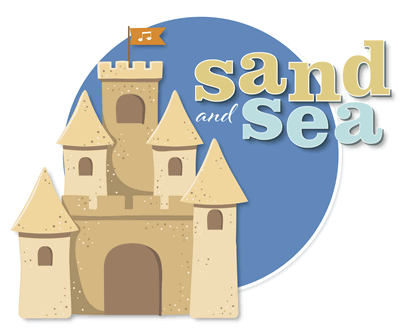

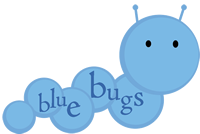
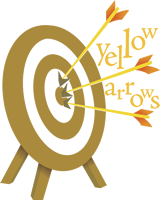
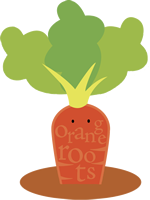
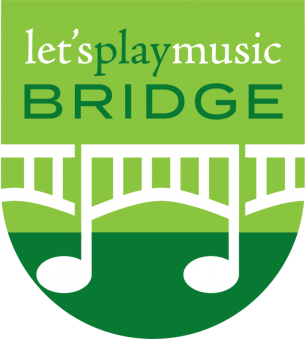


 “Thumb’s on Middle C and a finger for each key!" When we are in ‘C Position’ each finger is assigned to play the note it is sitting on. We will sing this chant A LOT in class! This week we practiced floating our bubble hands over the keys and then letting them land on ‘C Position’. Continue finding C position at home.
“Thumb’s on Middle C and a finger for each key!" When we are in ‘C Position’ each finger is assigned to play the note it is sitting on. We will sing this chant A LOT in class! This week we practiced floating our bubble hands over the keys and then letting them land on ‘C Position’. Continue finding C position at home. Our reward system for class is this: Each child has a treasure map with a turtle and they get to earn stickers for being on time and completing both parts of their homework (it must be signed or they don't get a sticker!) Also, they can earn a star for not playing their keyboards when they aren't supposed to. So they can get 4 stickers every class! Each time they get to the dark circles on the map, they get to pick a prize out of the treasure box!
Our reward system for class is this: Each child has a treasure map with a turtle and they get to earn stickers for being on time and completing both parts of their homework (it must be signed or they don't get a sticker!) Also, they can earn a star for not playing their keyboards when they aren't supposed to. So they can get 4 stickers every class! Each time they get to the dark circles on the map, they get to pick a prize out of the treasure box!  Remember that listening to the
Remember that listening to the 

